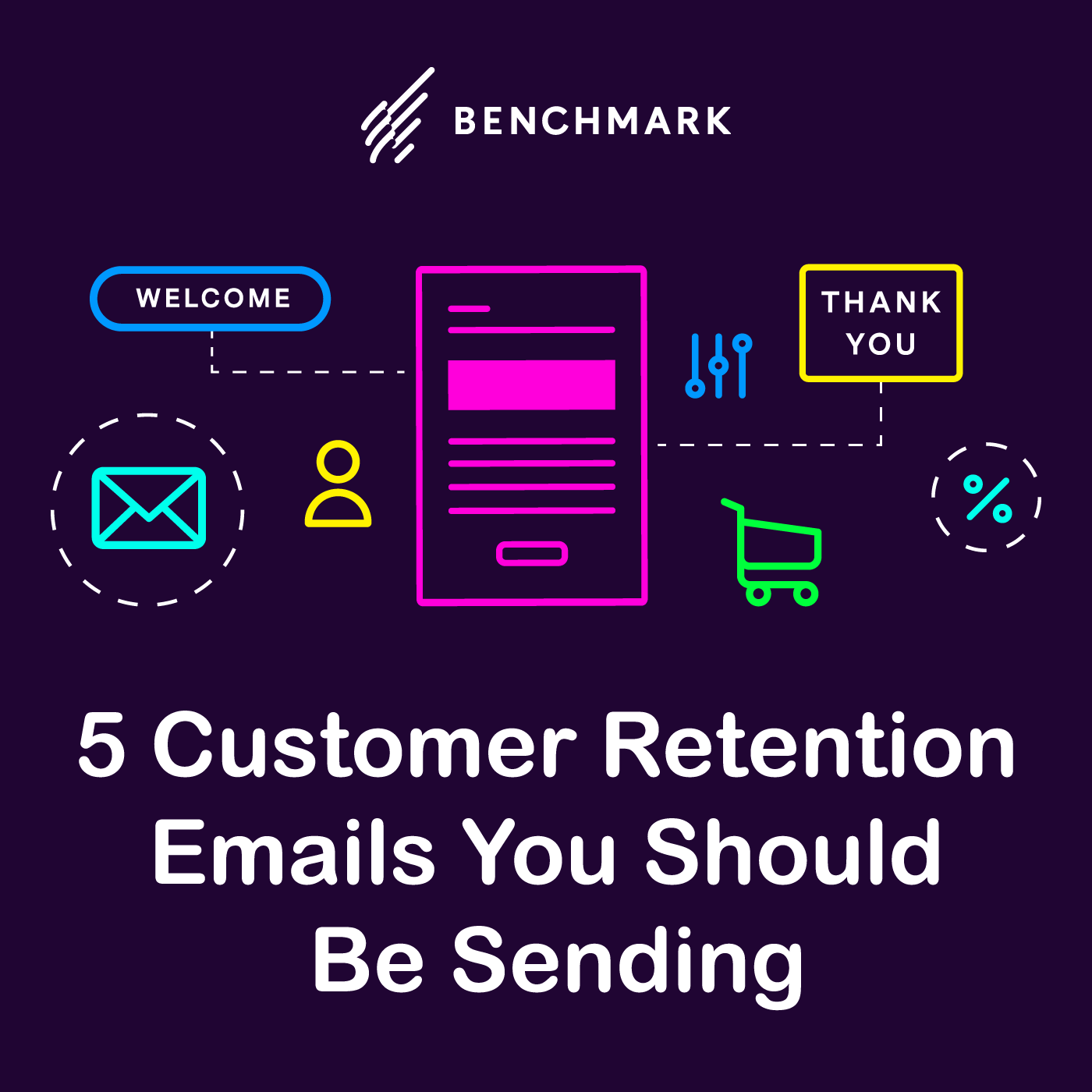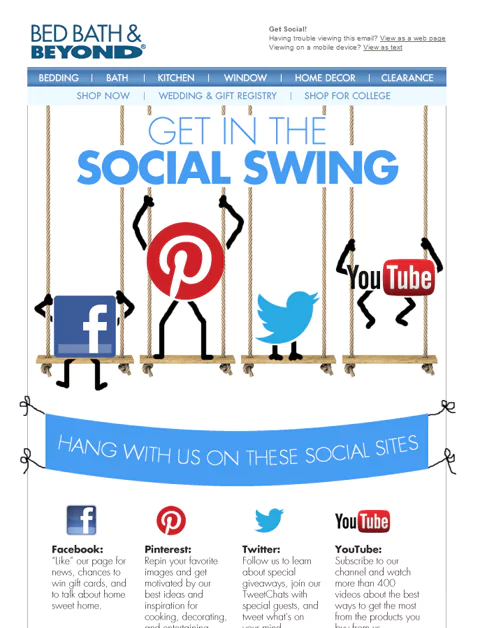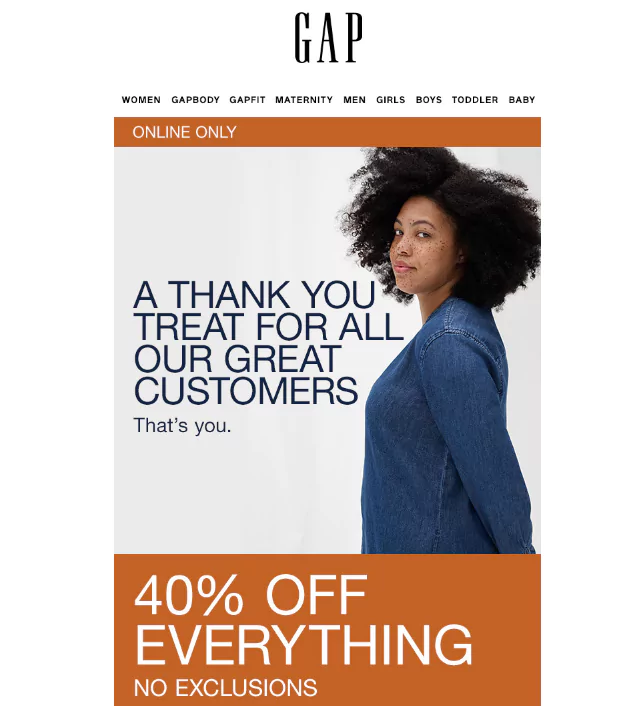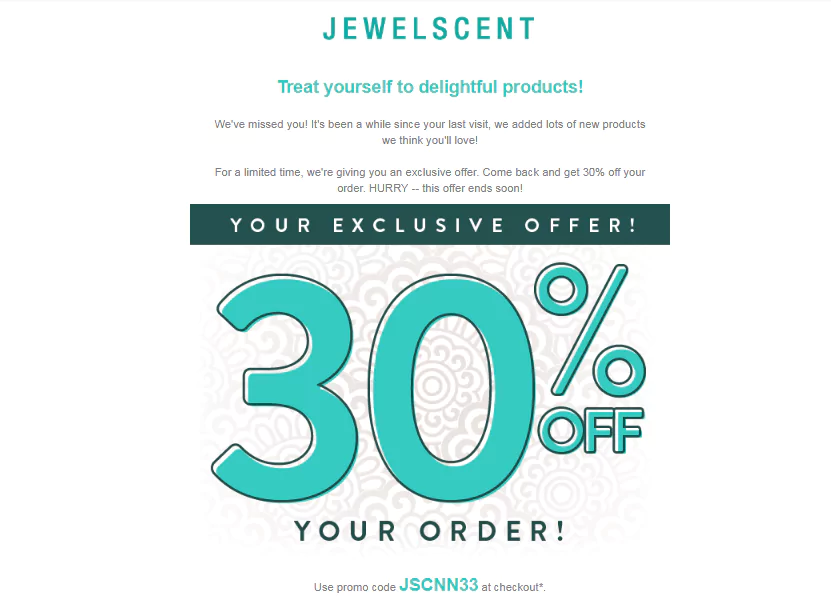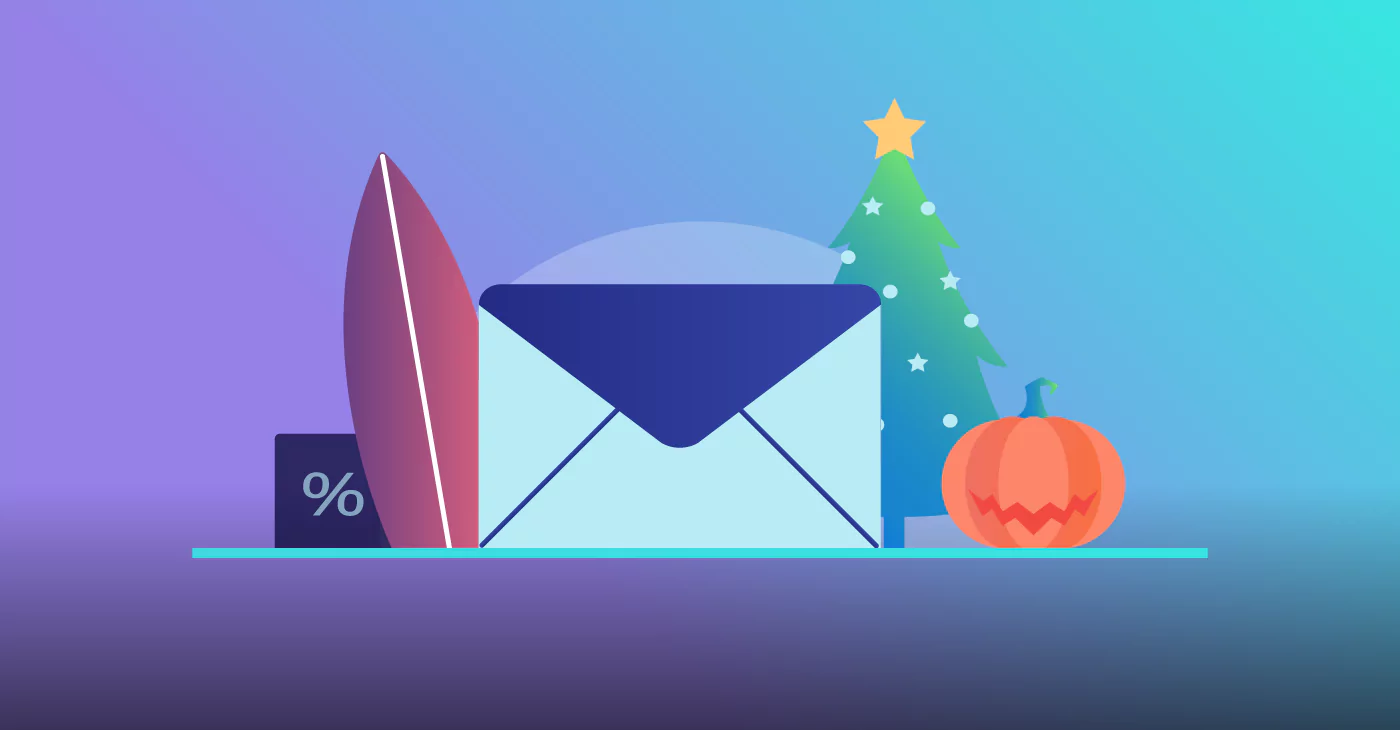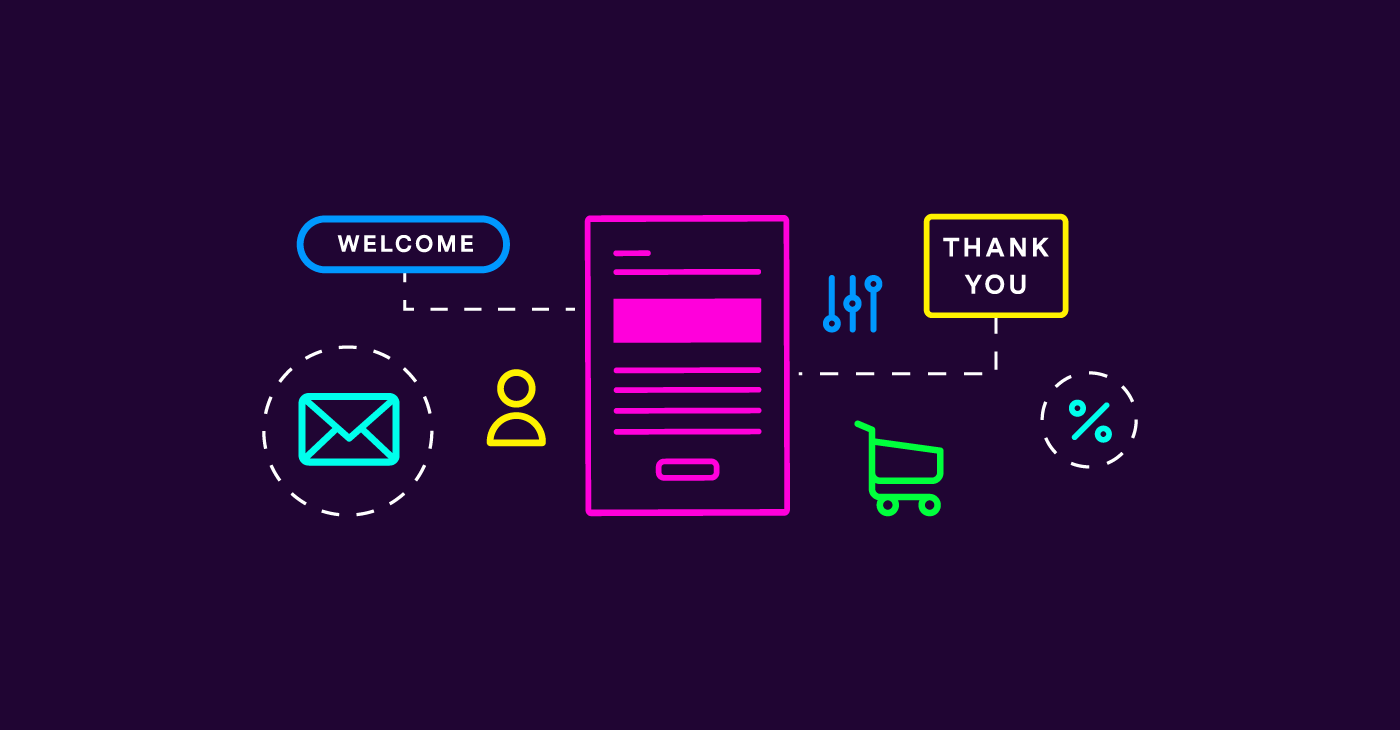
For eCommerce business owners, email marketing is one of the best ways to stay in touch with your customers.
Having a strong customer retention strategy is crucial for boosting conversions and revenue. Through email marketing automation and the delivery of consistent (and valuable) email marketing campaigns, you can keep customers coming back to your site for years to come.
In fact, research shows that the probability of selling to an existing customer is 60-70%, as opposed to the 5-20% of selling to a new one. As a result, 80% of businesses rely on email marketing for customer retention, with 56% considering it the most effective method for doing so.
With this in mind, you’ll want to curate a formulaic and intriguing email marketing campaign that will keep your clientele engaged.
There are five specific kinds of emails you must include in your email marketing strategy for ultimate retention.
#1) Welcome Email
Set up a welcome series for new subscribers/shoppers.
A friendly introduction will go a long way, and a welcome email provides you with an opportunity to engage with them in numerous ways. You can ask them to specify their product preferences so that you can send them email suggestions on what to buy. You might also include a first-time buyer discount.
Welcome emails are also a great way to invite shoppers to follow your social media accounts. If possible, even consider including a live social feed in the email to entice them.
If properly composed, welcome emails can elicit a significant boost in revenue. Experian found that welcome emails generate three times more transactions and revenue than regular promotional emails.
#2) Abandoned Cart
Cart abandonment in the e-commerce world is all too common, which is why setting up an automated abandoned cart email flow can be your saving grace.
Abandoned cart emails can easily be set up through email marketing automation platforms and e-commerce software, such as Shopify. The real key, however, is how to make these emails appealing.
The first thing to note is the importance of timing. Business Insider found that the quicker you send an abandoned cart email, the better. Sending one within three hours delivers the best results, including a 40% open rate and a 20% click-through rate. If a shopper does not respond to the first reminder email, consider sending a follow-up.
Secondly, you’ll want to compose an intriguing subject line. Consider something along the lines of:
- “Don’t let someone else snatch up your items!”
- “Hurry! Your cart is about to expire.”
Indicating a sense of urgency when sending the final abandonment reminder email will increase the chances of conversion. If you want some more ideas, check out our free Email Subject Line Generator.
#3) Thank You Email
Make sure to thank your customers. For everything. For purchasing, leaving a review, being a loyal shopper.
Simply saying thank you will show that you keep track of their patronage – and recognize that they chose your site.
In this email, you don’t need to sell or market anything – although it may behoove you to offer a thank you discount.
The best thing about thank you emails is that they generate double the open rate of one-off standard marketing emails, and take half the amount of time to create.
#4) Personalized Promo Email
While it can be effective to offer a mass promotion, the key to customer retention is offering personalized promotions to your loyal customers.
These include, but are not limited to: return customer discounts, birthday discounts, and frequent buyers discounts. Not only are you offering shoppers a monetary incentive, but you’re personalizing the kind of discount/messaging based on a specific milestone.
Another effective promo tactic is the anniversary email. Reward customers that have been subscribed to your newsletter for a year (or more) with a small discount on the date of their subscription anniversary.
Personalization is the future of email marketing, with personalized emails delivering 6x more revenue, according to Experian.
#5) Re-engagement Email
Don’t let your subscribers go dormant.
If you notice that there are users who have not opened/clicked through your emails in a long time, segment those users and send them a re-engagement email. Some effective subject lines for re-engaging users include:
- “[Name], we miss you!”
- “[Name], it’s been a while…”
- “Long time no see, [Name]!”
By personalizing these email subjects with the subscriber’s name and keeping them conversational, your subscriber will be curious about what lies inside. Win back their loyalty with a special offer or even just some info about recent changes made to your site (i.e. lower prices, new stock, updated shipping incentives).
Marketing Land states that 45% of re-engagement email recipients continue to read subsequent emails.
Other Considerations
When composing an effective email marketing strategy, is important not only to consider the content of the emails but the supporting factors. Timing, subject lines, and frequency are all additional considerations that can contribute to the success (or failure) of your open and click-through rates.
Personalizing subject lines, sending emails in the morning, and sending them often are all helpful tips for higher-converting email campaigns. However, keep in mind that these can vary by industry. eCommerce business owners should engage in A/B testing to see what subject lines or times work best on their subscribers.
From there, you can begin to hone and evolve your customer retention strategy – from the welcome email all the way to the re-engagement email. In turn, you should be rewarded with an increased revenue and loyal customer base.



